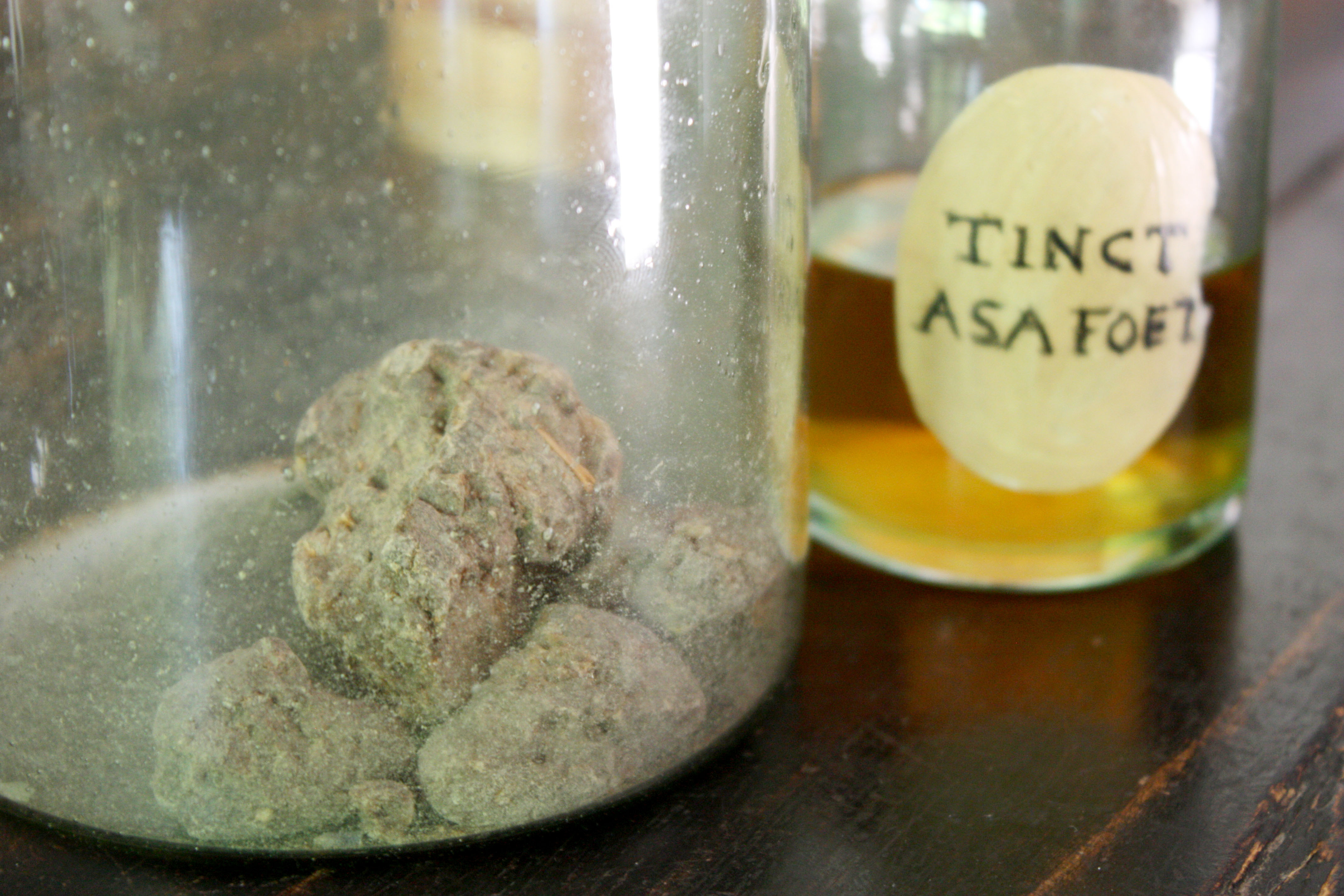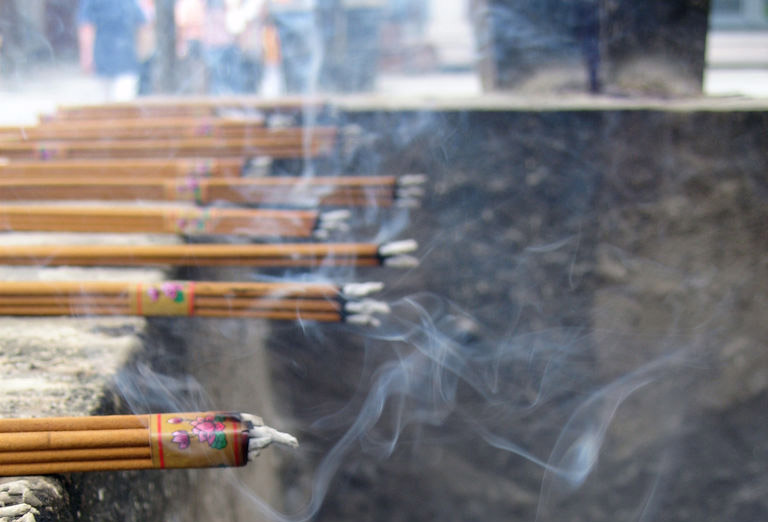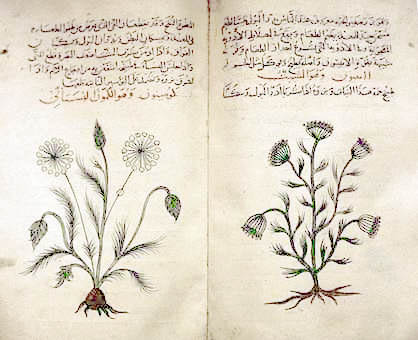|
Muskroot
:''The term "muskroot" can also refer to spikenard'' or ''Adoxa moschatellina'' Sumbul, also called sumbal or muskroot, is a drug occasionally employed in European medical practice. It consists of the root of '' Ferula moschata'', known formerly by the synonym ''Ferula sumbul'', a tall umbelliferous plant of the 'giant fennel' genus ''Ferula'' found primarily in the north of Bokhara in present-day Uzbekistan, although its range apparently extends into Southeastern Siberia : beyond the Amur river. It was first brought to Russia in 1835 as a substitute for musk; and in 1867 was introduced into the British pharmacopoeia. The root as found in commerce consists of transverse sections an inch or more in thickness and from 1 to 3 or more inches in diameter. It has a dark thin papery bark, a spongy texture, and the cut surface is marbled with white and blackish or pale brown; it has a musky odor and a bitter aromatic taste. The action and uses of the drug are the same as those of asafetid ... [...More Info...] [...Related Items...] OR: [Wikipedia] [Google] [Baidu] |
Asafetida
Asafoetida (; also spelled asafetida) is the dried latex ( gum oleoresin) exuded from the rhizome or tap root of several species of ''Ferula'', perennial herbs of the carrot family. It is produced in Iran, Afghanistan, Central Asia, southern India and Northwest China (Xinjiang). Different regions have different botanical sources. Asafoetida has a pungent smell, as reflected in its name, lending it the common name of "stinking gum". The odour dissipates upon cooking; in cooked dishes, it delivers a smooth flavour reminiscent of leeks or other onion relatives. Asafoetida is also known colloquially as "devil's dung" in English (and similar expressions in many other languages). Etymology and other names The English name is derived from ''asa'', a Latinised form of Persian ' mastic', and Latin 'stinky'. Other names include, with its pungent odour having resulted in many unpleasant names: Composition Typical asafoetida contains about 40–64% resin, 25% endogeneous gum ... [...More Info...] [...Related Items...] OR: [Wikipedia] [Google] [Baidu] |
Ammoniacum
Ammoniacum or gum ammoniac is a gum-resin exuded from the several perennial herbs in the genus ''Ferula'' of the umbel family (Apiaceae). There are three types of ammoniacum: the gums ammoniac of Cyrenaica, of Persia (the commercial one today), and of Morocco. Ammoniac of Cyrenaica Ammoniacum was first documented in the 1st century by Dioscorides in his ''De materia medica''. It got its name from the Temple of Jupiter Ammon in ancient Libya (located in the Siwa Oasis of Egypt today) near which it was produced. It is called the gum ammoniac of Cyrenaica to differentiate it from the commercial one used today, and its source plant has been identified as '' Ferula marmarica'' native to Libya and Egypt. The export of the gum ammoniac of Cyrenaica to Europe declined after Arab and Turk domination of the Middle East, but probably continued at least until the 18th century, as Linnaeus still cited Libya and Egypt as the places of origin of ammoniacum in his ''Materia medica''. Ammoni ... [...More Info...] [...Related Items...] OR: [Wikipedia] [Google] [Baidu] |
Spikenard
Spikenard, also called nard, nardin, and muskroot, is a class of aromatic amber-colored essential oil derived from '' Nardostachys jatamansi'', a flowering plant in the honeysuckle family which grows in the Himalayas of Nepal, China, and India. The oil has been used over centuries as a perfume, a traditional medicine, or in religious ceremonies across a wide territory from India to Europe. Historically, the name ''nard'' has also referred to essential oils derived from other species including the closely related valerian genus, as well as Spanish lavender; these cheaper, more common plants have been used in perfume-making, and sometimes to adulterate true spikenard. Etymology The name ''nard'' is derived from Latin , from Ancient Greek (), from (''nērd''). This word may ultimately derive either from Sanskrit ( 'Indian spikenard'), or from ''Naarda'', an ancient Assyrian city (possibly the modern town of Dohuk, Iraq). The " spike" in the English name refers to the inflo ... [...More Info...] [...Related Items...] OR: [Wikipedia] [Google] [Baidu] |
Ferula Ammoniacum
''Ferula ammoniacum'' (syn. ''Dorema ammoniacum''), also known as oshac or ussaq, is a species of flowering plant in the family Apiaceae, native to Iran, Turkmenistan, Afghanistan, and Pakistan. It is the source of Persian gum ammoniac. References ammoniacum Ammoniacum or gum ammoniac is a gum-resin exuded from the several perennial herbs in the genus ''Ferula'' of the umbel family (Apiaceae). There are three types of ammoniacum: the gums ammoniac of Cyrenaica, of Persia (the commercial one today), a ... Flora of Iran Flora of Turkmenistan Flora of Afghanistan Flora of Pakistan Plants described in 2015 {{Apiaceae-stub ... [...More Info...] [...Related Items...] OR: [Wikipedia] [Google] [Baidu] |
Incense
Incense is an aromatic biotic material that releases fragrant smoke when burnt. The term is used for either the material or the aroma. Incense is used for aesthetic reasons, religious worship, aromatherapy, meditation, and ceremonial reasons. It may also be used as a simple deodorant or insect repellent. Incense is composed of aromatic plant materials, often combined with essential oils. The forms taken by incense differ with the underlying culture, and have changed with advances in technology and increasing number of uses. Incense can generally be separated into two main types: "indirect-burning" and "direct-burning." Indirect-burning incense (or "non-combustible incense") is not capable of burning on its own, and requires a separate heat source. Direct-burning incense (or "combustible incense") is lit directly by a flame and then fanned or blown out, leaving a glowing ember that smoulders and releases a smoky fragrance. Direct-burning incense is either a paste formed around a ... [...More Info...] [...Related Items...] OR: [Wikipedia] [Google] [Baidu] |
India
India, officially the Republic of India, is a country in South Asia. It is the List of countries and dependencies by area, seventh-largest country by area; the List of countries by population (United Nations), most populous country since 2023; and, since its independence in 1947, the world's most populous democracy. Bounded by the Indian Ocean on the south, the Arabian Sea on the southwest, and the Bay of Bengal on the southeast, it shares land borders with Pakistan to the west; China, Nepal, and Bhutan to the north; and Bangladesh and Myanmar to the east. In the Indian Ocean, India is near Sri Lanka and the Maldives; its Andaman and Nicobar Islands share a maritime border with Thailand, Myanmar, and Indonesia. Modern humans arrived on the Indian subcontinent from Africa no later than 55,000 years ago., "Y-Chromosome and Mt-DNA data support the colonization of South Asia by modern humans originating in Africa. ... Coalescence dates for most non-European populations averag ... [...More Info...] [...Related Items...] OR: [Wikipedia] [Google] [Baidu] |
Iran
Iran, officially the Islamic Republic of Iran (IRI) and also known as Persia, is a country in West Asia. It borders Iraq to the west, Turkey, Azerbaijan, and Armenia to the northwest, the Caspian Sea to the north, Turkmenistan to the northeast, Afghanistan to the east, Pakistan to the southeast, and the Gulf of Oman and the Persian Gulf to the south. With a Ethnicities in Iran, multi-ethnic population of over 92 million in an area of , Iran ranks 17th globally in both List of countries and dependencies by area, geographic size and List of countries and dependencies by population, population. It is the List of Asian countries by area, sixth-largest country entirely in Asia and one of the world's List of mountains in Iran, most mountainous countries. Officially an Islamic republic, Iran is divided into Regions of Iran, five regions with Provinces of Iran, 31 provinces. Tehran is the nation's Capital city, capital, List of cities in Iran by province, largest city and financial ... [...More Info...] [...Related Items...] OR: [Wikipedia] [Google] [Baidu] |
Sedative
A sedative or tranquilliser is a substance that induces sedation by reducing irritability or Psychomotor agitation, excitement. They are central nervous system (CNS) Depressant, depressants and interact with brain activity, causing its deceleration. Various kinds of sedatives can be distinguished, but the majority of them affect the neurotransmitter Gamma-Aminobutyric acid, gamma-aminobutyric acid (GABA). Most sedatives produce relaxing effects by increasing GABA activity. This group is related to hypnotics. The term ''sedative'' describes drugs that serve to calm or Anxiolytic, relieve anxiety, whereas the term ''hypnotic'' describes drugs whose main purpose is to initiate, sustain, or lengthen sleep. Because these two functions frequently overlap, and because drugs in this class generally produce dose-dependent effects (ranging from anxiolysis to loss of consciousness), they are often referred to collectively as ''sedative–hypnotic'' drugs. Terminology There is some overlap ... [...More Info...] [...Related Items...] OR: [Wikipedia] [Google] [Baidu] |
Hysteria
Hysteria is a term used to mean ungovernable emotional excess and can refer to a temporary state of mind or emotion. In the nineteenth century, female hysteria was considered a diagnosable physical illness in women. It is assumed that the basis for diagnosis operated under the belief that women are predisposed to mental and behavioral conditions; an interpretation of sex-related differences in stress responses. In the twentieth century, it shifted to being considered a mental illness. Influential physicians the likes of Sigmund Freud and Jean-Martin Charcot had dedicated research to hysteria patients. Currently, most physicians do not accept hysteria as a medical diagnosis. The blanket diagnosis of hysteria has been fragmented into myriad medical categories such as epilepsy, histrionic personality disorder, conversion disorders, dissociative disorders, or other medical conditions. Furthermore, lifestyle choices, such as choosing not to wed, are no longer considered symptom ... [...More Info...] [...Related Items...] OR: [Wikipedia] [Google] [Baidu] |
Valerian (herb)
Valerian (''Valeriana officinalis'', Caprifoliaceae) is a perennial flowering plant native to Eurasia. It produces a catnip-like response in cats. Crude Extract, extracts of valerian root may have sedative and anxiolytic effects; however, the clinical evidence is mixed and debated. It is commonly sold as dietary supplement to promote sleep. A dry ethanol extract of valerian root has been recognized as a medicine for adults with mild symptoms by the European Medicines Agency. Names The name of the herb is derived from the personal name ''Valeria (gens), Valeria'' and the Latin verb (to be strong, healthy). Other names used for this plant include garden valerian (to distinguish it from other ''Valeriana'' species), garden heliotrope (although not related to ''Heliotropium''), setwall (though this originally meant zedoary, from which it is etymologically derived) and all-heal (which is also used for plants in the genus ''Stachys''). ''Valeriana rubra'', red valerian, often grown ... [...More Info...] [...Related Items...] OR: [Wikipedia] [Google] [Baidu] |
Norman Farnsworth
Norman Robert Farnsworth (March 23, 1930 – September 20, 2011) was a pharmacognosist, professor, and author. Early life and education He received his bachelor's in 1953 and master's in 1955 in pharmacy at the Massachusetts College of Pharmacy, and his Ph.D. in Pharmacognosy from the University of Pittsburgh School of Pharmacy in 1959, where he helped establish the Pharmacognosy Department, became its first chair, and taught until 1970. Military service An army veteran of the Korean War, Farnsworth served as a Private First Class and eventually as a Corporal in the Third Infantry Division, Seventh Regimental Combat Team, nicknamed the "Fire Brigade" in Korea. He was seriously wounded in the winter of 1950. Because of his service during the Battle of the Chosin Reservoir, he received the Bronze Star Medal with a "V" device, which is the U. S. military's fourth-highest award for valor. He was also awarded four oak leaf clusters, representative of four additional awards of ... [...More Info...] [...Related Items...] OR: [Wikipedia] [Google] [Baidu] |
Pharmacognosy
Pharmacognosy is the interdisciplinary scientific study of natural drugs and bioactive compounds from plants, animals, and minerals—originally focused on identifying crude drugs but now expanded to molecular, chemical, ecological, and medicinal aspects of natural products. Plants produce a variety of chemical compounds—primary metabolites essential for all plants and secondary metabolites with specialized roles like defense and pollination attraction—that include classes such as alkaloids, polyphenols, glycosides, and terpenes, many of which have therapeutic uses in humans and are isolated through bioassay-guided fractionation. Traditional medicine continue to inform modern pharmacology. Microscopic evaluation plays a key role in identifying herbs, detecting adulterants, and examining distinctive plant tissues through methods such as measuring leaf constants, including the stomatal index, which expresses the proportion of stomata to epidermal cells. Description The ... [...More Info...] [...Related Items...] OR: [Wikipedia] [Google] [Baidu] |




